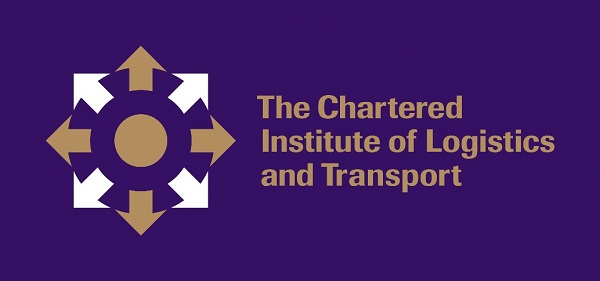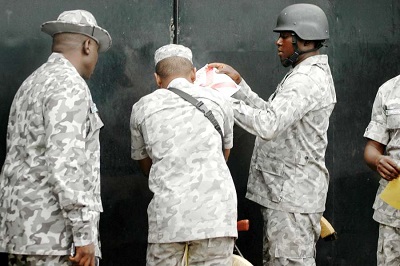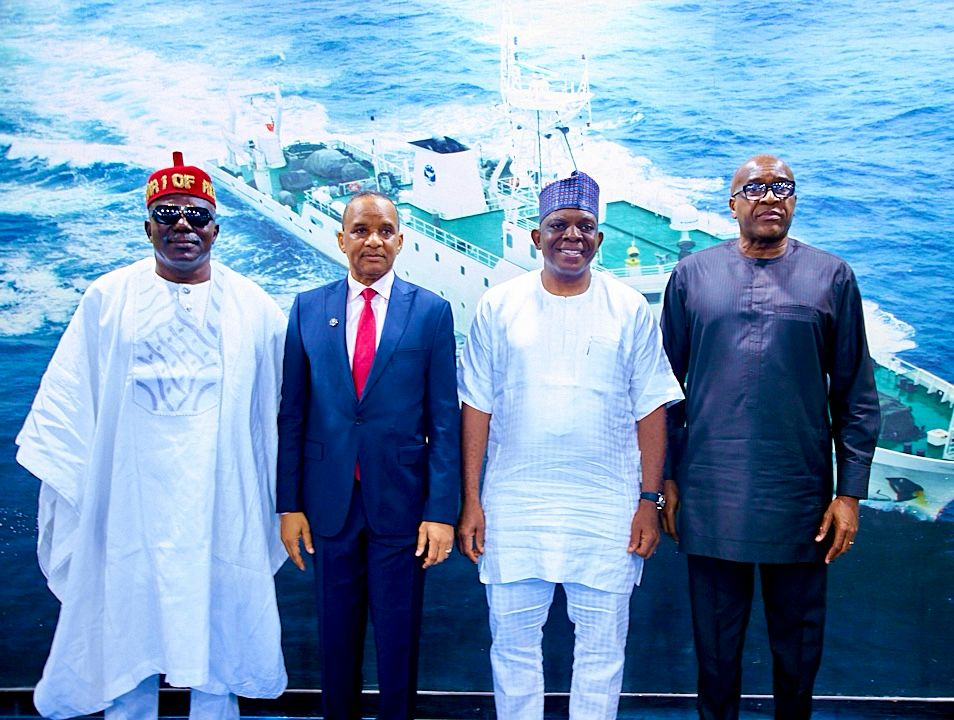N50bn NIMASA Floating Dock Loses Class, N21.6bn Potential Earnings

· Incurs N6bn debt as berthing charges
· Why NIMASA/ NPA Partnership will fail -Oforiokuma
· We’re concluding plans to deploy the asset – Jamoh
By Kenneth Jukpor
Three years after the arrival of the Nigerian Maritime Administration and Safety Agency’s (NIMASA) N50billion modular floating dock, the asset remains abandoned alongside the Nigerian Naval Dockyard, Wilmot Point, Victoria Island, with its classification suspended due to lack of maintenance and overdue statutory surveys. This valuable marine asset that was intended to boost the nation’s ship repair capacity and transform Nigeria’s maritime industry for wealth and employment creation is estimated to be losing a potential revenue of over $18million (N7.2billion) annually.
According to the Association of Marine Engineers and Surveyors (AMES), the floating drydock also costs NIMASA N3.6million in daily expenses; and $30,000 per day as berthing fees to the Nigerian Navy Holdings Ltd amounting to over N6.8 billion annually.
Shipping experts have further queried the partnership between NIMASA and the Nigerian Ports Authority (NPA) in the bid to put the floating dock into a state of operational readiness for commercial activities, suggesting that a private-sector operator with relevant technical capacity would be better suited to make the floating dock operational using a sustainable commercial approach.
There are also concerns that the floating dock, which was a significant dent in the previous administration at the apex maritime agency, has quickly became a chronic problem for the Dr. Bashir Jamoh-led administration.
Speaking recently on the issue, the NIMASA Director-General, Dr. Jamoh, said, “For our modular floating dock, we have been going back and forth on the project, but we have concluded arrangements on where to place the floating dock. However, there is a need to put some things in place before we deploy the floating dock to the location.”
While this promise seems assuring, industry observers have dismissed them, noting the similar approach and myriad of assurances proffered by Jamoh’s predecessor, Dr. Dakuku Peterside, and the lack of capacity of both public sector agencies to operate such an asset successfully.
MMS Plus also recalls an interview https://mmsplusng.com/blog/why-nimasa-n50bn-floating-dock-hasnt-been-operational-dakuku/, where the former Director-General of NIMASA, Dr. Dakuku Peterside, said, “NIMASA had finalized arrangements with NPA to have the floating dock berthed and operational at the Continental Shipyard,” the Port Authority’s moribund subsidiary in Apapa. “When the floating dock left for Nigeria, we thought we could get the support of the Nigerian Ports Authority (NPA) to berth at the Continental Shipyard. We did not realize that the Continental Shipyard had already been restructured via Public-Private Partnership (PPP) arrangement. The private partner did not give us the kind of cooperation we asked for,” Dakuku said.
Recall that on June 20, 2020, the Director General of NIMASA, Dr. Bashir Jamoh also told journalists that the agency had concluded plans with Nigerian Ports Authority (NPA) to move the floating dock to NPA dockyard and gainfully utilize the facility. It’s ironic to note that NPA’s antiquated floating dock acquired over 40 years ago, and operated alongside Continental Shipyards, today lies half-sunk and abandoned for scrap along the Badagry creek on the south side of Snake Island opposite Tin-Can Island port.
Amid the uncertainties surrounding the deployment of this floating dock, and the effluxion of time, marine surveyors posit that the floating dock is currently out of class and as such will require class reactivation and overdue annual/ dry docking surveys to get her back to operation, at significant expense in foreign currency.
Speaking with MMS Plus, a Governing Council Member of the Nigerian Content Development and Monitoring Board (NCDMB), and Chairman of NCCF Shipping & Logistics Group, Mr. Mina Oforiokuma advised NIMASA to hand-over the floating dock to an experienced and reputable private sector shipyard operator.
His words: “Government has no business in business. The floating dock is a positive initiative and we commend NIMASA for the project. However, only an experienced private sector operator can make this project commercially viable and sustainable. The dock was purchased from Damen Shipyards at tremendous cost. I’ll give you some statistics, there’s a similar Damen modular floating drydock in Port-Harcourt operated by Shipside Drydocks Limited, a subsidiary of Nestoil Group. The NIMASA floating dock is of similar size, class age and capacity as the dock operated by Nestoil which has been busy 24/7 every day for the past 3 years.”
“Shipside’s floating dock measures 110 metres in length, with external and internal beams of 32 and 26 metres respectively, and a maximum lifting capacity of 5,000 tonnes. A typical ten-day drydocking/ under bottom survey in this dock would cost approximately $500,000, equivalent to a monthly revenue of about US$1.5m for an equipment only slightly smaller in size than NIMASA’s floating dock. That’s the revenue NIMASA is losing by abandoning that dock at the Naval dockyard, and don’t forget there’s also a cost for keeping her afloat at the Naval Dockyard.”
According to Oforiokuma, it is high time NIMASA looks for a competent private sector operator of proven international repute to manage this asset on an Operate-Maintain-Transfer (OMT) model for the benefit of the shipping community and enhancement of in-country ship repair capacity for which the investment was destined in the first place.
“I disagree with the partnership between NPA and NIMASA on the floating dock because it is like two blind men leading each other. Who is going to see first? NPA and NIMASA are government regulatory agencies that both lack the technical capacity to operate such a business. NPA should focus on the landlord model of ports administration, as there are more than enough challenges in our ports that need to be urgently addressed. Tackling port congestion and facilitation of an intermodal transport system is paramount and should be NPA’s priority. There are more than enough issues for NIMASA regarding handling cabotage compliance, maritime security and regulating safety standards in our maritime industry. These agencies should not get distracted by attempting to become maritime operators overnight. Marine operations are a highly specialized sector that professionals should carry out with proven expertise and skills, and we cannot reinvent the wheel,” he said.
A peek into the history of ship repair yards operated by the government also leaves a bitter taste, Mr. Oforiokuma said. The privatized Nigerdock established in 1984 was a strategic investment by the Nigerian government to position the country as a shipbuilding nation. Experts, however, posit that this should have been replicated four or five times over to put Nigeria at par with it’s peers at the time, South Korea, India, and Brazil. After 30 years post-privatization, Niger-Dock only has a graving dry dock of approximately 140meters, with the Nigerian Naval Dockyard built around the same era only having a dry dock length of about 145 meters and maximum lifting capacity for vessels up to 30,000 deadweight tonnes. NPA’s Continental Shipyards is entirely out of business with an old sunken floating dock of about 100 meters. Tema Shipyard Ghana has a 220-meter drydock with lifting capacity to perform repairs on large ocean-going vessels up to 100,000 deadweight tonnes, thus dividing a large share of Nigeria’s ship repair market with Dakarnave Shipyard, Senegal and Southern African Shipyards.
Meanwhile, another example of a private-driven efficient dry dock is the $400million SHI-MCI shipyard adjacent to the Lagos Deep Offshore Logistics (LADOL) base. It was developed by Samsung Heavy Industries of Korea and Total Upstream (TUCN) in 2018 as a legacy investment from the Egina project. The yard made history as the first integration quay in Africa to receive a 330-meter FPSO unit to integrate topside modules fabricated in Nigeria.
The build-out program for Egina, the world’s largest Floating Production Storage and Offloading (FPSO) vessel, commenced in 2014 at Samsung’s Goeje Shipyard, South Korea. The then Minister of Petroleum Resources and Chairman of the Nigerian Content Development and Monitoring Board (NCDMB) Governing Council, mandated in line with Nigerian local content laws to build part of the vessel in Nigeria. Egina FPSO’s hull was towed out from Korea to Lagos SHI-MCI yard to complete the first-ever Nigerian onshore integration FPSO works under stringent Nigerian local content regulations with similar safety & quality standards applicable in Samsung’s Korean yards. This volume of onshore work has never been accomplished in Nigeria.
“Having accomplished the Egina FPSO project, who should have greater capacity to manage a floating dock than Samsung themselves”, some shipping experts have asked. Shouldn’t NIMASA be talking to international shipbuilding companies like Samsung to manage its floating dock and by so doing train Nigerians to enhance their skills and in-country capacity in shipbuilding and ship repair operations?
Also speaking on the issue, the 2nd Vice President of the Association of Marine Engineers and Surveyors (AMES), Engr. Emmanuel Ilori lamented that the bureaucracy hindering the deployment of the asset should have been expunged in the industry’s best interest.
“The fact that the floating dock has not been deployed means we need to be asking questions about why this is yet to happen. Anything that will improve ship dry docking in Nigeria is definitely a step in the right direction. This will reduce the number of people going out of the country to dry dock their vessels and it’ll conserve our foreign reserve.”
“AMES will dialogue with NIMASA again to know the state of things, although the Director-General made some promises and asked for time because these issues are stuck in bureaucracy. Unfortunately, as professionals, we would have preferred that dry docking is not embroidered in bureaucratic issues. In the hands of a businessman, this multi-million-dollar investment would not have to face these many challenges. Government should remove these obstacles and let the Nigerian maritime sector enjoy the benefits of the floating dock,” he told MMS Plus.
Ilori also dismissed the challenges of siting the NIMASA floating dock, stating that; “It is not an issue of location because wherever they put it will enrich and empower that community. As long as the facility is visible and safe, I am sure there will not be an issue. It will be beneficial to the industry, and that is what we are asking. If they decide to put it in Lagos, that’s okay; but it is also fine if they decide to put it outside Lagos. The agency had ample time, about 3 or 4 years, to decide the location of the floating dock.”
In mid-July, Samsung’s SHI-MCI Lagos shipyard received the newly built LNG fuelled Aframax crude oil tanker vessel, MT Pacific Ruby launched at Samsung’s Korean yard in April this year. Pacific Ruby is the largest vessel after Egina to berth within Lagos pilotage district. At 113,000 dead weight tonnes and 250 metres in length, the vessel required urgent technical maintenance which was successfully carried out at the SHI-MCI yard, being the first of its kind in Nigeria’s history for such size of vessel
NPA recently carried out a fleet renewal program and acquired a number of newly built modern harbour tugboats from Damen shipyards in the Netherlands. One of the Authority’s major problems over the years has been maintenance of these very expensive marine assets which can now be carried out seamlessly and can as well be built in Nigeria.
The NIMASA Modular floating dock measuring 125m by 35m with three inbuilt cranes, and a maximum lifting capacity for vessels up to 5,000 deadweight tonnes and up to 50 tonnes per meter keel load, for smaller size vessels and tug boats, was built in Damen yards at Rotterdam in the Netherlands and Galati in Romania in line with contractual agreements entered into by the administration of Mr. Patrick Akpobolokemi and Nairda with fabrication to commence in 2014.







